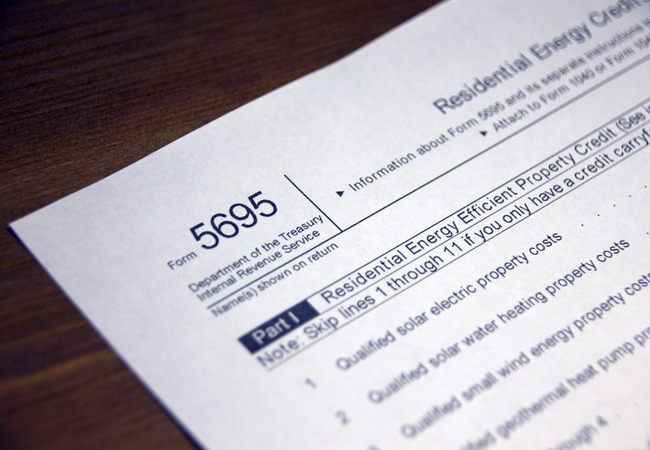- (702) 941-0911
- info@gfactorsolar.com
- Contact us at any time!

The Inflation Reduction Act (IRA) was signed into federal law on August 16, 2022. This legislation is the largest-ever investment in clean energy and climate change in the United States. The bill is expected to create millions of jobs, reduce greenhouse gas emissions by 40% by 2030, and lower energy costs for American families. The IRA includes green energy tax credits for both residential and commercial applications.
Overview
The Inflation Reduction Act includes a wide range of provisions that will help to accelerate the transition to a clean energy economy. These provisions include:
The Inflation Reduction Act is a major step forward in supporting the green energy movement. The bill is expected to have a significant impact on the American economy, creating jobs, reducing pollution, and lowering energy costs. So how does the solar and battery tax credit work?
Your state and utility might also offer rebates, credits, and SREC certificates. SRECs allow you to earn money for the electricity your solar system generates. If you live in a state with an SREC market, you typically won’t sell your certificates to a utility directly; instead, you’ll work with an SREC aggregator or broker to monetize your SRECs.
Parts & Labor Eligibility
Property owners who leverage the 30% ITC from the federal government can plan to see the following expenditures covered, among other expenses:
What’s Not Eligible
The IRS instructions in Form 5695 for the Residential Energy Efficient Property Credit states “Qualified solar electric property costs are costs for property that uses solar energy to generate electricity for use in your home“. The tax credit is only for qualified solar electric property costs. A close reading of the law at Section 25D suggests that the expenses are allowed only for property that uses solar energy to generate electricity or is an integral part of such equipment (like the mounting hardware). In this case, tree trimming does not seem to qualify since it is not an integral part of the equipment that produces electricity from solar energy.
Sales reps make all sorts of claims about what expenses apply towards this credit, but as we know, they want to sell you services and are not tax experts. If you want to make a claim for such a credit for 1. foam insulation, 2. tree trimming, and/or 3. standard roof replacement on the grounds that it can make your solar electricity system more efficient, consult with a tax professional who will guarantee your filing, i.e., will pay your penalties and interest if the IRS disputes your claim. Also, if you take this credit, you must reduce the basis in your home by the amount of the credit. See “You must reduce the basis of your home by the amount of any credit allowed” at https://www.irs.gov/pub/irs-pdf/i5695.pdf
Traditional building components that primarily serve a roofing or structural function generally don’t qualify. For example, roof trusses and traditional shingles that support solar panels don’t qualify, but solar roofing tiles and solar shingles do because they generate clean energy.
Other Incentives
There are other solar incentives to consider like rebates and state-sponsored programs depending on where your property is located, such as payments from renewable energy certificates (SREC).
Commercial projects are eligible for ‘accelerated depreciation’ credit (MACRS), while non-profits can make use of the Direct Pay credit (cash). Residential projects might have other federal energy efficiency home improvement credits to explore: https://www.irs.gov/credits-deductions/energy-efficient-home-improvement-credit
You can find the IRS’ official documentation on the solar tax credit here: https://www.irs.gov/credits-and-deductions-under-the-inflation-reduction-act-of-2022
Other Information
If the property owner has a home office, the credit computation becomes more difficult. If less than 80% of the solar PV system cost is a residential expense, the IRS only allows the percentage that relates to the residential spending to be used in the credit calculation. The portion that is a qualifying business expense follows commercial ITC rules on Schedule C.
Additionally, you don’t necessarily need to be a property owner to claim the solar tax credit; tenant-stockholder relationships in corporations and for condo-owners may be certain credits to explore. Here is a great four page article provided by the U.S. Department of Energy that is worth reading: https://www.energy.gov/sites/default/files/2021/02/f82/Guide%20to%20Federal%20Tax%20Credit%20for%20Residential%20Solar%20PV%20-%202021.pdf
End Of Blog!
If you’re a property owner and would like to learn more, or if you’re interested in potentially working together, fill out the contact form/send an email/give us a call or text! Thank you.